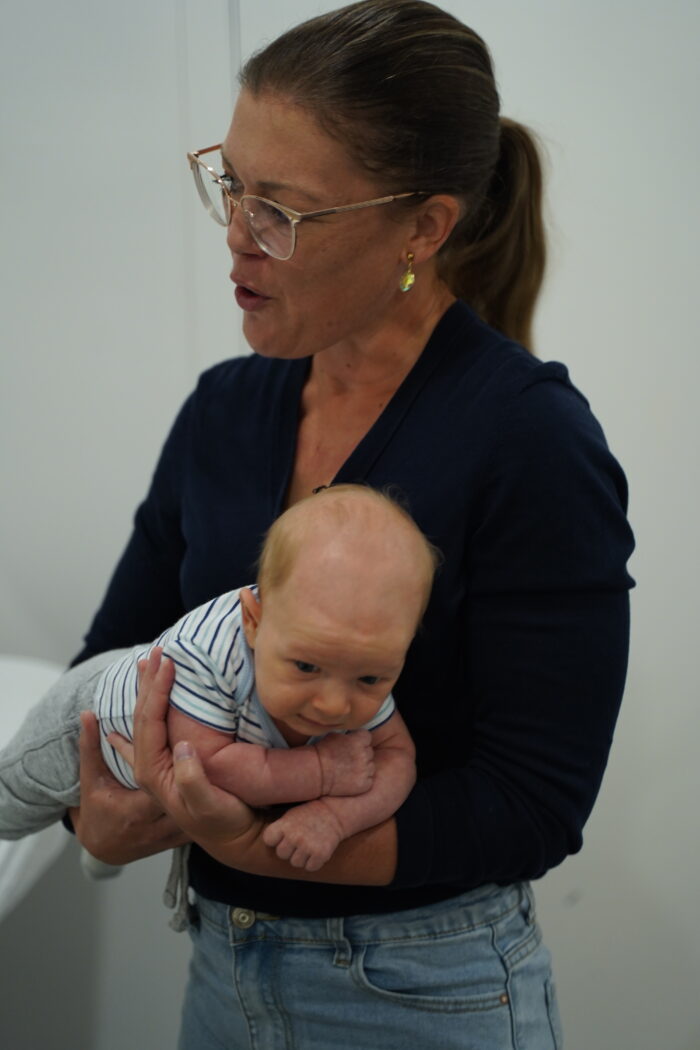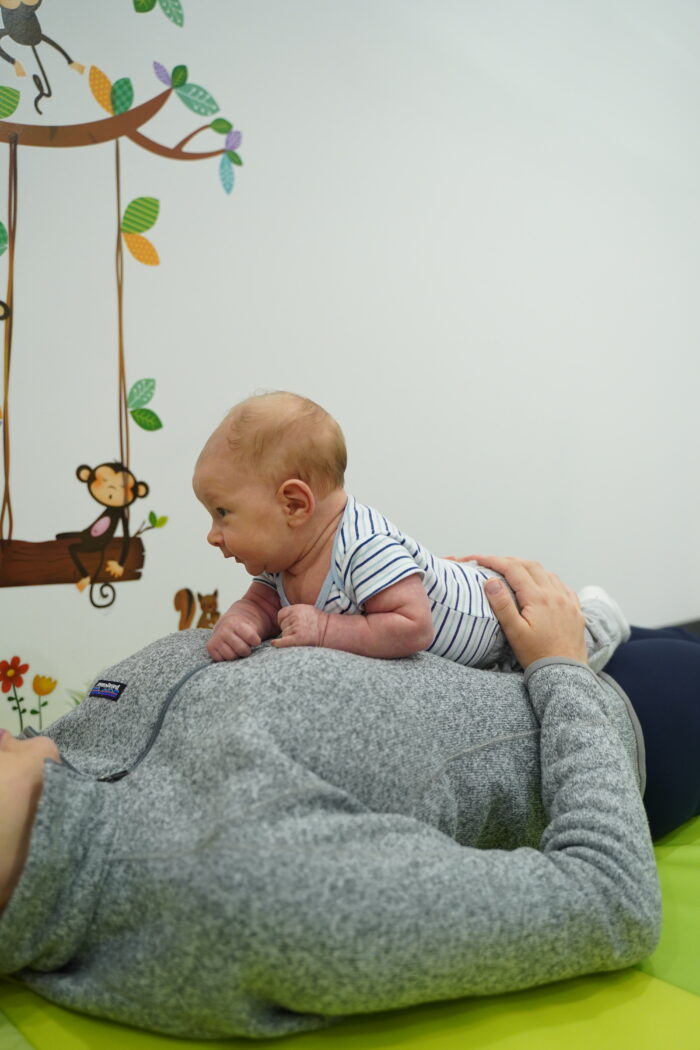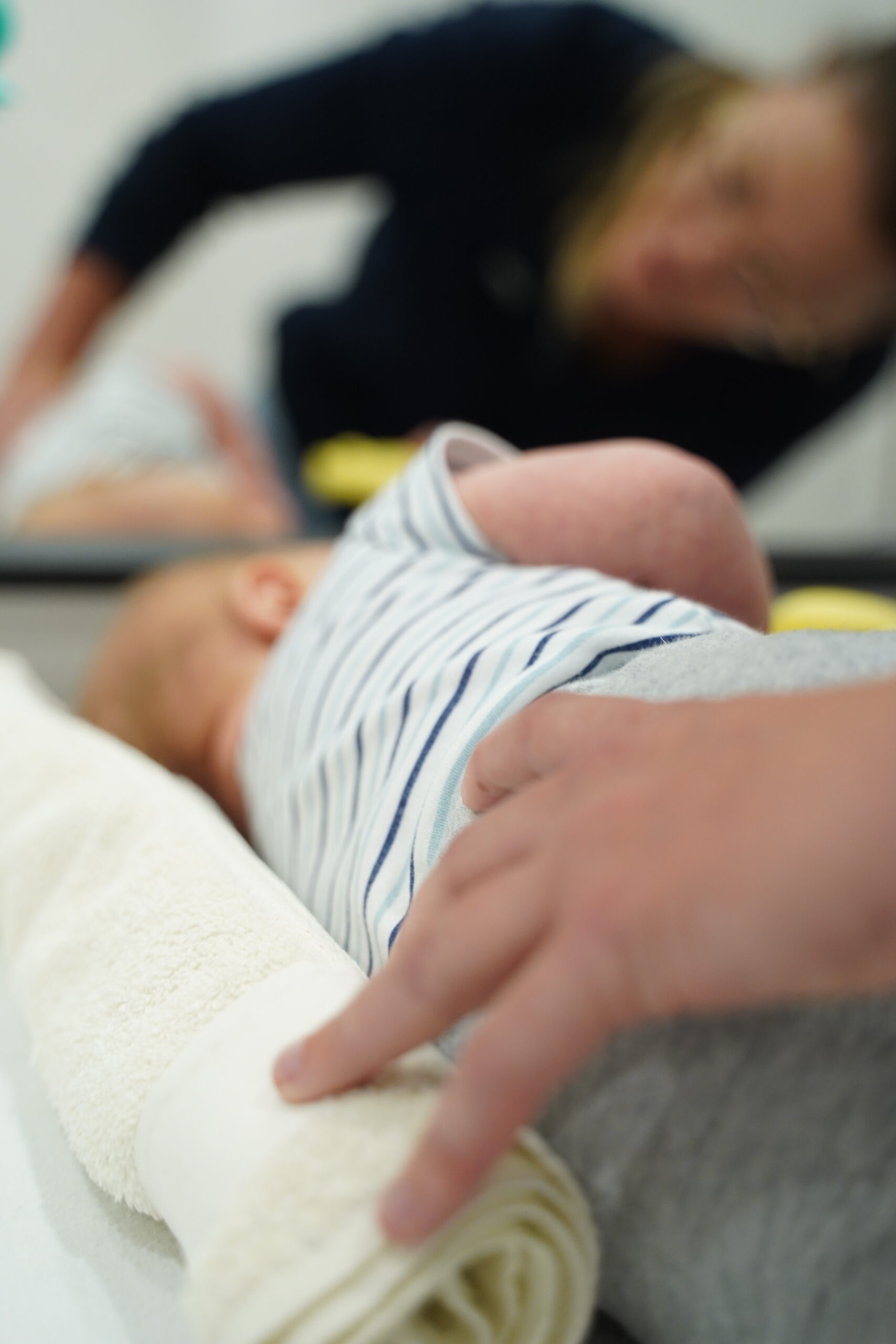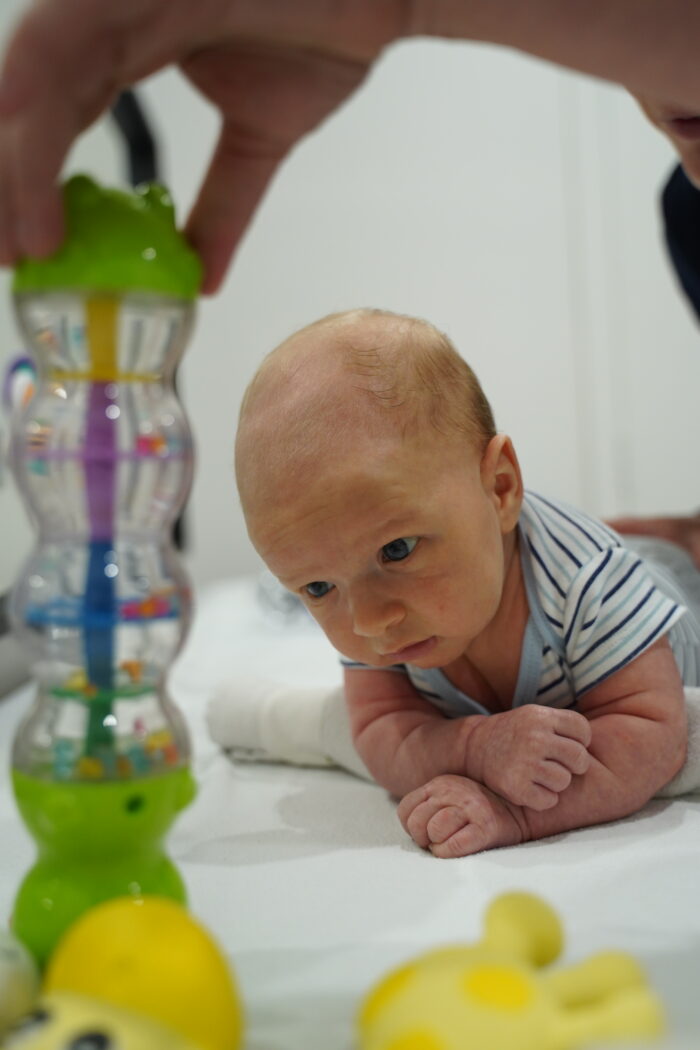Playing on the tummy is important, but for many families and for our most important target, babies, it can be a challenge. Positioning babies on their tummies is essential for good motor development. Among other things, it stimulates motor control, head extension, forearm support, weight transfer, exploration of the environment and reduces the risk of developing plagiocephaly (flat head syndrome).

But what’s the right way to position baby?
– Elbows should remain in line with shoulders, or slightly forward.
– If baby moves his elbows back, it’s important to reposition him.
– A small roller can be placed under baby’s armpits, while maintaining good shoulder/elbow alignment, to help give slight support.
– We can also work on a slightly inclined surface (parents’ legs, cushions) so that the head and shoulders are slightly higher than the pelvis.
– We can stimulate head straightening with light-up toys, in front of a mirror or even face-to-face with the parent.
face-to-face with the parent. Keep it fun for the child.
– Lying on the parent’s chest or in the parent’s arms, face to face

The ventral position: the only good position?
Although very important, the prone position is not the only option. It’s essential to vary positions to optimize your baby’s motor development, depending on his age. The lateral decubitus position (baby lying on his side) also helps prevent plagiocephaly (flat heads) and keeps baby’s head and hands centered, which is essential to facilitate the next stages of motor development.

Our physiotherapist Josie has a few tips to help you vary your positions:
-Aim for shorter work periods, even if it means doing it more often.
-Try to stimulate your child with toys or songs. Distraction makes it easier to get through the more difficult stages, as baby explores a great deal in the early years.
-If baby is having a crying fit, there’s no need to try too hard. It’s a good idea to change position and then come back to it.
-Make it part of baby’s and parents’ routine: after naptime, after diaper changes, when Mom gets dressed, etc.

It’s important to keep Canadian pediatric standards in mind, and to make sure that position variations are carried out during baby’s waking periods. This way, your child should sleep on his back until he can roll over independently and safely.
If tummy time remains a nightmare, or if you have any concerns about your child’s motor development, don’t hesitate to consult a qualified professional to assess your child and provide guidance.
Make an appointment with Josie for more personalized advice.

